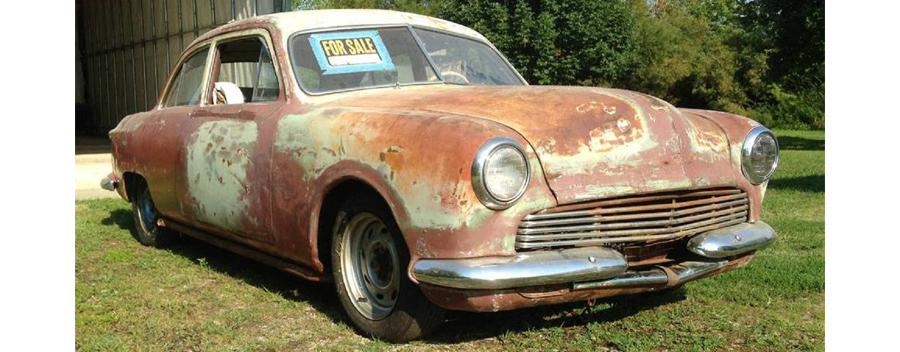
Nate Bowne’s 1950 Sectioned Ford
Hi Gang…
I’ve spent quite a bit of time learning about American custom cars, and I’ve been fortunate to meet some of the “greats” that built them. From George Barris to Gene Winfield to Leo Lyons and more. Each of these men taught me much through the work that they did, the cars that they built and conversations that we had, and all of this started with our acquisition of the 1947 Kurtis-Omohundro Comet and learning its place in American sports car history.
Click Here To View Online Book on the 1947 Kurtis-Omohundro Comet
One of the projects that came from this research had to do with the Dan Post Custom Car Archives – its an accomplishment that I’m most proud of and it helped establish the earliest known body of work having to do with designing, building and showing America’s postwar custom cars.
Click Here to Learn More About The Dan Post Custom Car Archives
Dan Post Publications published both design and “build” books on custom and futuristic cars and all were written by the legendary Bob Gurr. These books included:
- How To Draw Cars of Tomorrow (1952)
- ABC’s of Custom How (1954)
- Automobile Design – Styling Book (1955)
But that’s only what he did in the earliest part of his career – in his 20s. Bob Gurr worked directly for Walt Disney and helped design and build all transportation rides at Disney from its start in 1955 and for many decades more. He was one of Disney’s original “Imagineers.” Those of you interested in learning more about Bob and his early custom car design work can click on the link below:
Click Here To Learn More About the Books Bob Gurr Created For Dan Post
So why all of the build-up to learning about the car in today’s story? Because to me, the car we’re going to review is the holy grail of custom cars when it comes to the work needed to create it.
Major Modifications in Making a Custom Car
Back in the early postwar years, a “custom car” was one of original design. The 1947 Kurtis-Omohundro Comet would be an example. Custom Cars were different than “Re-Styled Cars” in which builders started with normal production components and then modified these in small or large ways.
There are 3 major modifications you can make in creating a custom car:
- Chopping
- Channeling
- Sectioning
Chopping involves lowering the greenhouse or roof of the car to give it more of a sleek look. This is difficult since when you cut a section out of the posts that hold the roof, you have to address changes in styling lines, upright structures that hold the roof and support the windows and so on. And you have to ensure that the “chop” you are doing is going to look good (not all “chops” do). See example below of a “chop” – this one was done in photoshop to illustrate the technique.
Channeling involves lowering the body so that the frame rails are closer to the body floor or protrude through the floor of the car. This gets the body closer to the ground for a “faster” look.
Sectioning a car mostly refers to cutting the body horizontally to remove a section (usually 3-5 inches of metal) and drop the height of the body down to a lower level. It reduces the “bulk” of the entire body but can be the most difficult of all 3 of these techniques because in involves taking a “section” out of the middle of the car and fitting the upper half to the lower half in ways never originally intended. Typically, the following panels have to be “sectioned” and reduced in size when using such a technique:
- Front fenders and inner fenderwells
- Inner and outer door skins
- Trunk
- Hood
- Rear quarters and inner fenderwells
- Firewall / dash mounting area
- Rear of inner trunk
- Inner trunk panels
- And more
This requires amazing dedication, hard work, tenacity and more to make this happen, and is the least common method of customizing a car because of the tremendous amount of work required. Click here to learn more about chopping, channeling and sectioning.
The 1954 Dan Post Customizing Book: ABC’s of Custom How
Dan Post’s 1954 book titled “ABC’s of Custom How” was America’s first comprehensive book on how to customize a car. Bob Gurr set about learning from the legendary builders of his era from the late 1940s thru the early 1950s and set these techniques and detail in his 1954 book. It captures everything that was done to these cars and how to do them just before the custom car community changed their emphasis to paint, chrome and other details. Gurr’s book is my favorite book of the custom car era.
Click Here To Review Bob Gurr’s 1954 Book on Customizing Your Car
Below is a page from this book showing a 5 inch section that would have to be removed from the trunk and a 4 and 1/2 inch section that would have to be removed from the length of the car. Keep in mind that everything behind the “skin” of the body would have to be removed too – it’s not for the faint of heart. Now you know why I call this the “holy grail” of customizing techniques in creating a custom car. And that’s what makes the car in today’s story so special.
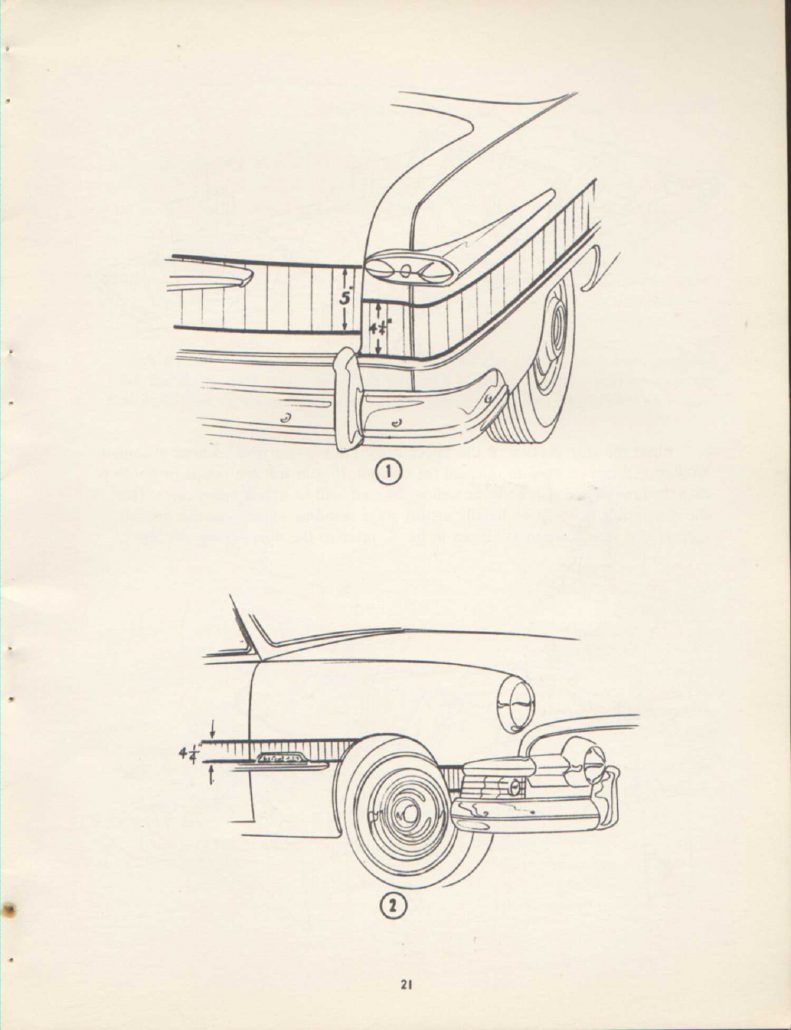 1949-1951 “Shoebox” Ford
1949-1951 “Shoebox” Ford
In 1949, Ford came out with a completely new design inside and out. The styling was sleek, the look was modern and the chassis improved. 1949 was the year that Ford changed from a single spring front and back to independent front suspension and longitudinal springs in the back. Improvements were made in the engine too. This style was kept through 1951. See example of Shoebox Ford below.
1951-1954 Ford Comete (European)
Many of my European friends have pointed out to me another Ford produced near the same time but in Europe only – the 1951-1954 Ford Comete. They often compared the Comete to the American Ford Shoebox but identified that the body was much “slimmer” – not as bulky and tall as its American counterpart:
In theory, a sectioned Ford Shoebox would approximate the slimmer lines of the Ford Comete but in an American way – just my kind of car. And that’s what John Fletcher did in creating his sectioned 1950 2-door sedan. Let’s have a look.
The 1950 John Fletcher Special
Back in the fall of 2017, I was showing my friend and Undiscovered Classics Team member Nate Bowne a car that we had been tracking for a while and were possibly going to acquire – John Fletcher’s sectioned Ford. Much to my surprise, the car had been available for some time and no one jumped at the opportunity. I was surprised because this was a sectioned Ford – the hardest technique to do and it had been executed beautifully.
Part of the reason may have been the style of the car. Most sectioned jobs were done on 2 door coupes – this was a 2 door sedan. The coupe version is considered more sleek and stylish – the sedan version less so. Nonetheless, sectioned Fords were made from both models in the 1950s.
Nate Bowne’s 1950 Sectioned Ford 2 Door Sedan
Nate fell in love with the car and while I was correct the car would be coming to Undiscovered Classics, it would ultimately be Nate who would be the owner and future restorer. Let’s have a look at the car Nate Bowne acquired – with some great shots of Nate and his car on the day it arrived in Tampa, Florida back in 2017.
Thoughts on the Nate’s Sectioned Ford
The car “was” and “is” still very attractive to me for a variety of reasons. Yes….the 2 door coupe is a very pretty design, but what makes this special is that very few 2 door sedans were sectioned back in the day – and this one survived. I also like the backstory of this car. I didn’t mention earlier but the car was retrieved from a collapsed barn in Silex, Missouri. It had been there since the 1950s and was the only thing that still rolled out when it was found. I’ll post a better photo of this soon, but you can see the barn collapsed around the car in the image below:
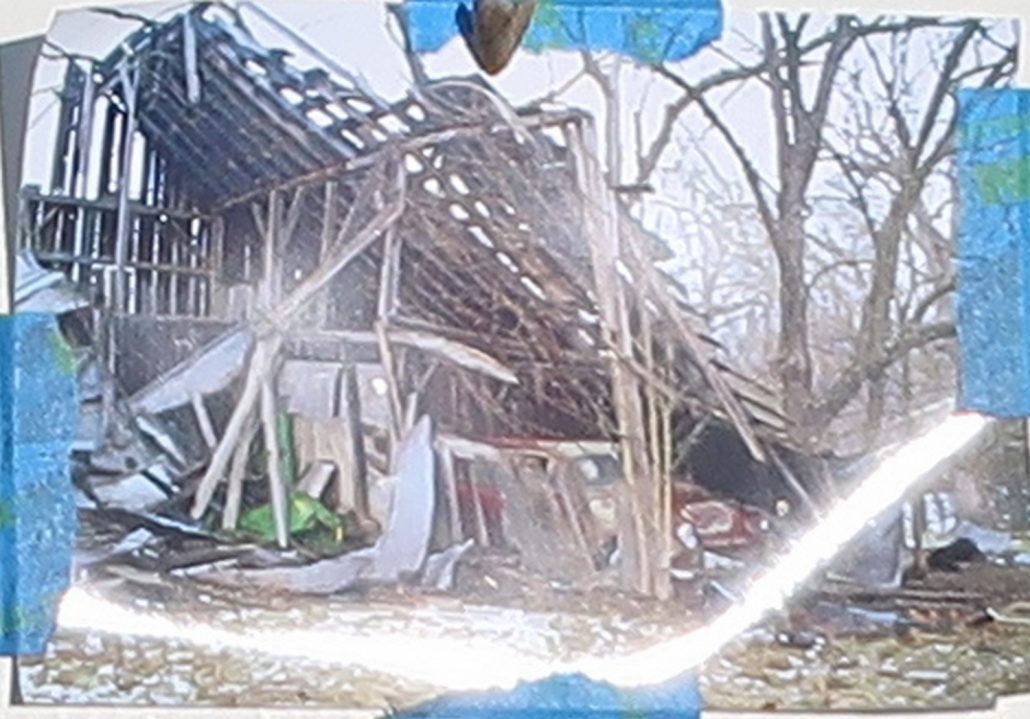 The styling of the front and back of the car is very nice. The typical “bullet nose” of the Shoebox Ford is gone and the entire front end is more sleek. The frenched taillights are cool too. John Fletcher also cut in areas of the body for the front and rear bumpers – it’s all very attractive and should be quite a sight when the car is finished. Of course the custom interior with the handbuilt console and more is a great touch on making this inside unique too.
The styling of the front and back of the car is very nice. The typical “bullet nose” of the Shoebox Ford is gone and the entire front end is more sleek. The frenched taillights are cool too. John Fletcher also cut in areas of the body for the front and rear bumpers – it’s all very attractive and should be quite a sight when the car is finished. Of course the custom interior with the handbuilt console and more is a great touch on making this inside unique too.
Summary:
So perhaps this is the “car that got away” in terms of a fine piece to have and restore for one’s collection. But if it is, it could not have gone to a better man. Good luck on your restoration Nate – we look forward to sharing more photos as you make progress on your car.
Hope you enjoyed the story, and remember…
The adventure continues here at Undiscovered Classics.
Geoff
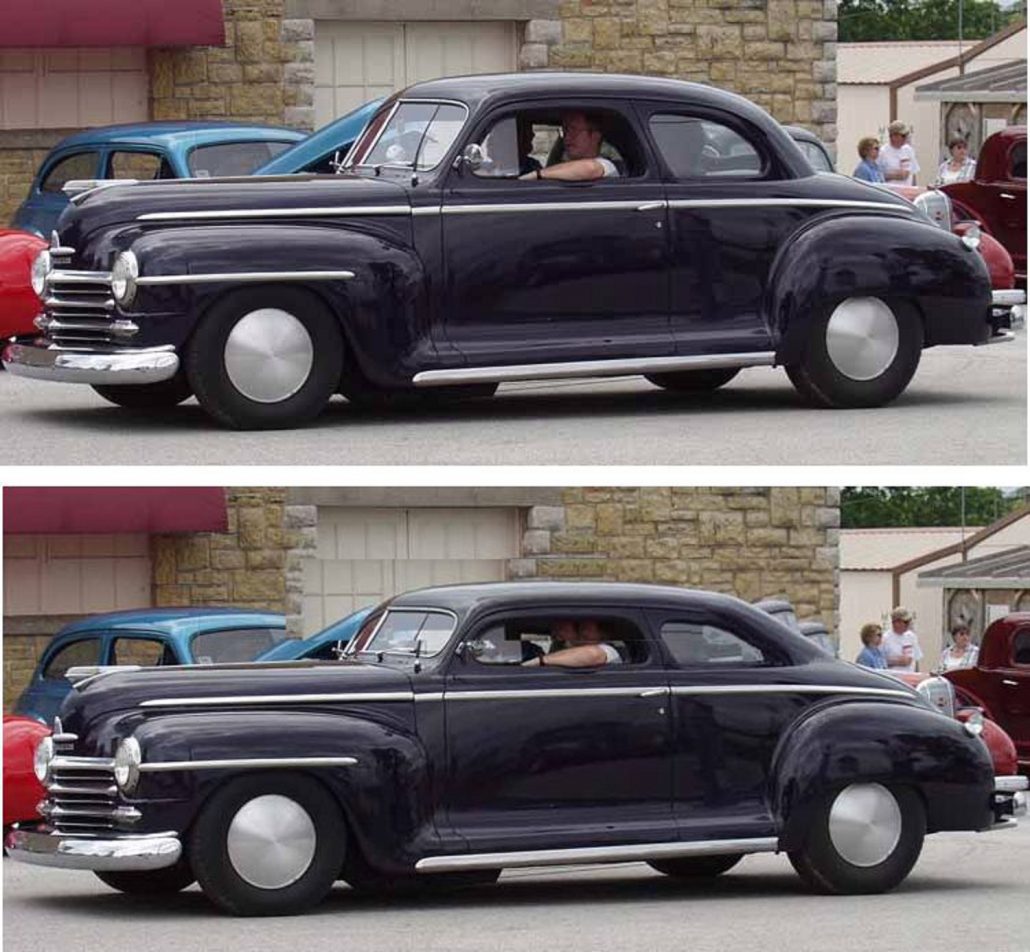
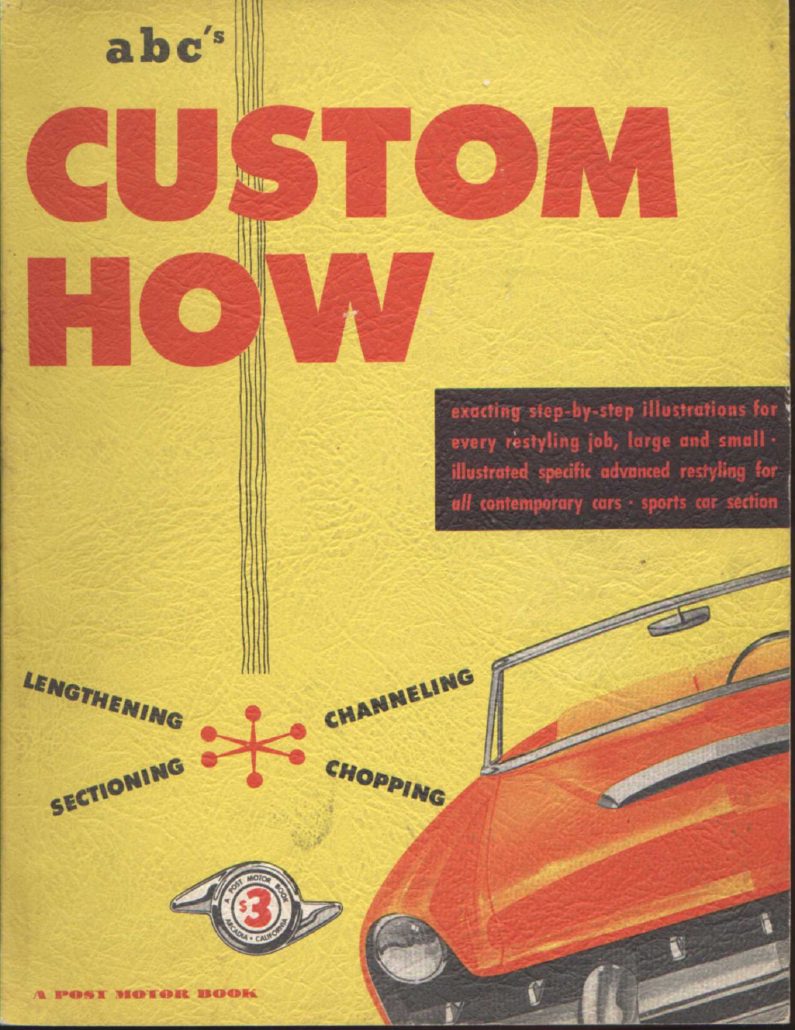

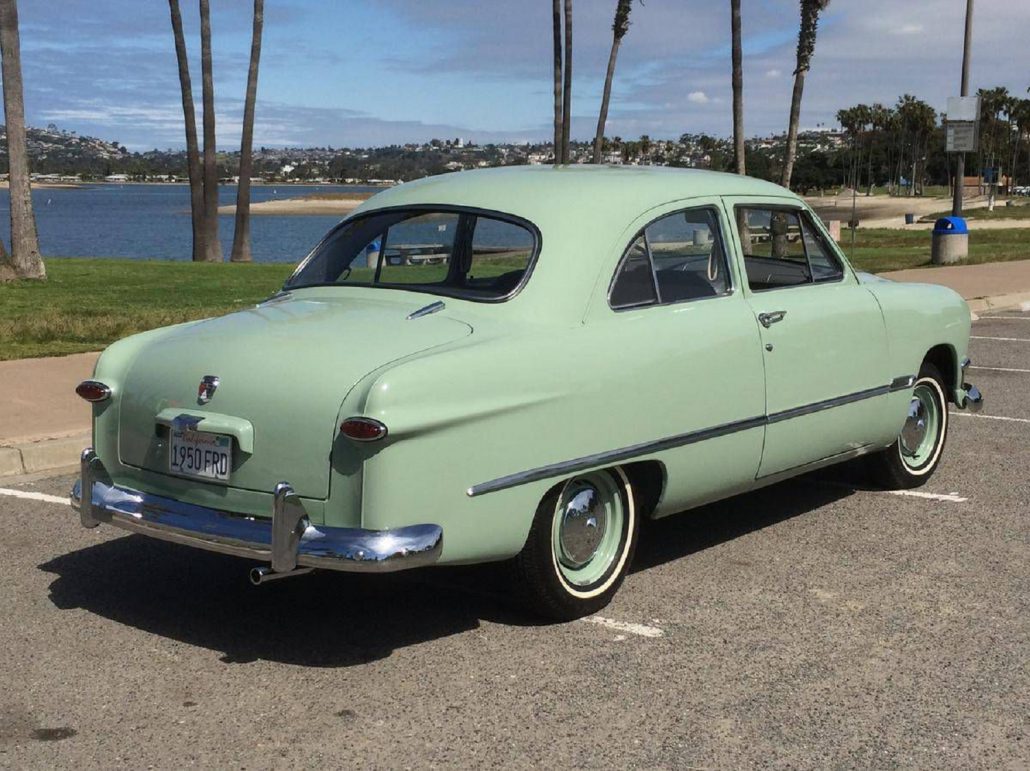



















I seem to remember a similar car in Great Falls, Montana in about 1962 or 1963. It was sectioned, shaved and was in red oxide primer. I rode my bike past it everyday on my way to school. I was to young to understand lust, but I did lust for that car.